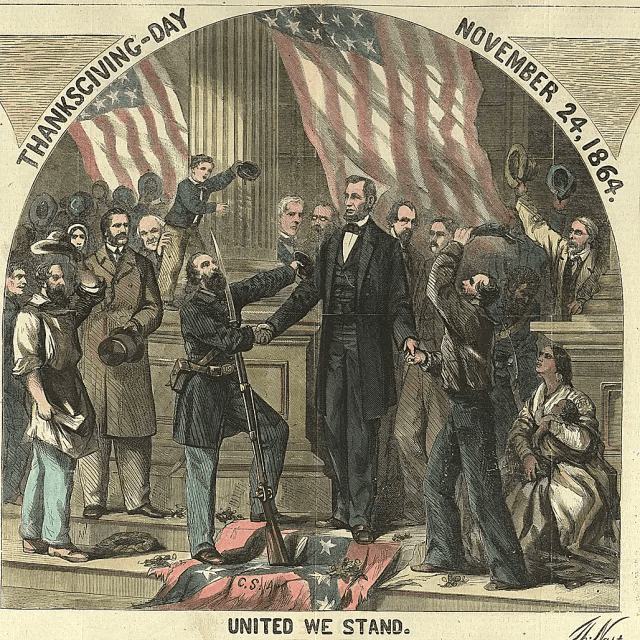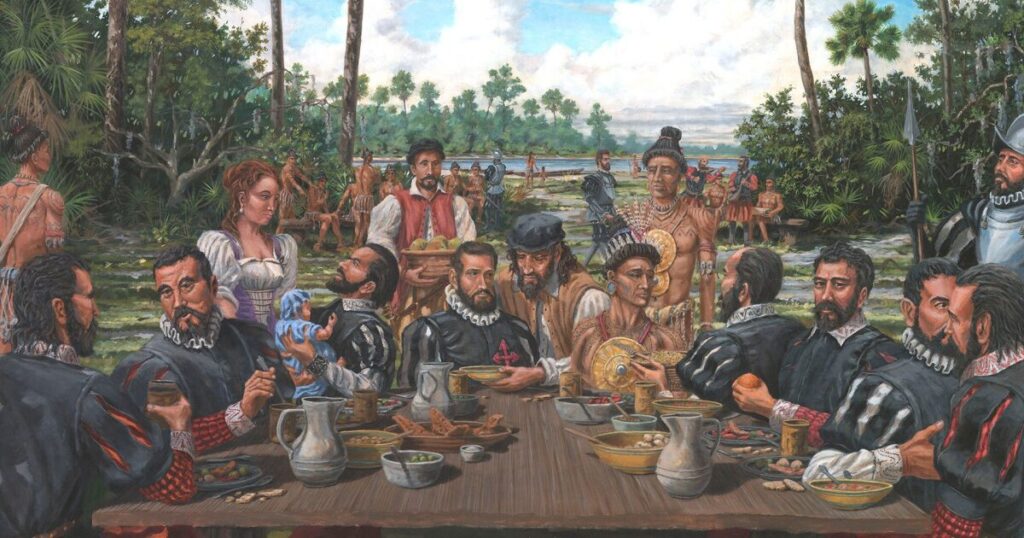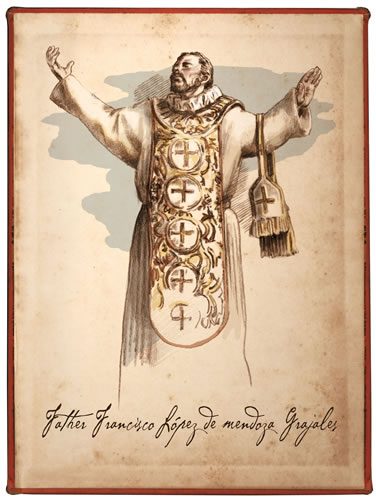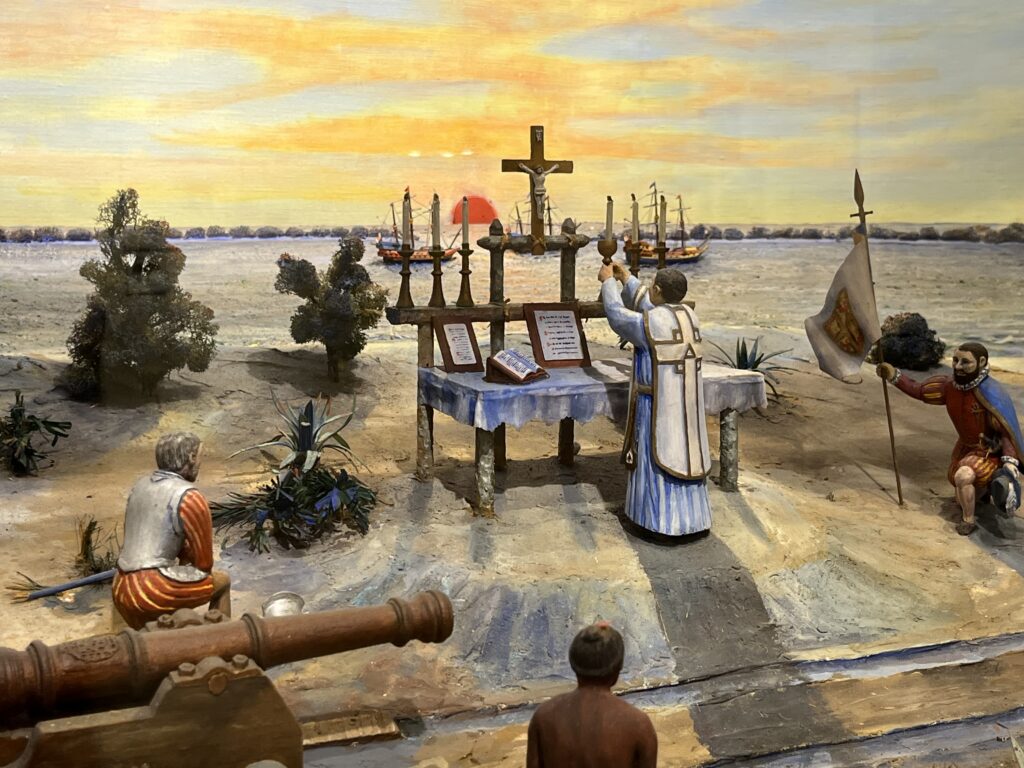

The Catholic Patriotic Minute #21: The First Thanksgiving in North America
Catholics For Catholics Special Edition | November 24th, 2025
The First Thanksgiving in North America: St. Augustine, Florida
Ever since President Abraham Lincoln established his Proclamation of Thanksgiving in 1863 amidst the Civil War, the United States as a nation has celebrated Thanksgiving, “a day of Thanksgiving and Praise to our beneficent Father who dwelleth in the Heavens,” as Lincoln defined it.

The President asked for Americans, on Thanksgiving Day in the years to come, to remember and pray for those who lost and suffered during the Civil War, as well as to ask God “to heal the wounds of the nation and to restore it as soon as may be consistent with the Divine purposes to the full enjoyment of peace, harmony, tranquillity and Union.”
Before 1863, Americans would honor days of thanksgiving in different ways amongst the states. The English colonists, mostly Puritans, would have solemn days of thanksgiving by praying in church most of the day and by fasting. Most Americans believe that the “First Thanksgiving” was celebrated by a feast between the Pilgrims and the Wampanoag people in Plymouth, Massachusetts, in the fall of 1621.
However, the first historical account of a “First Thanksgiving” actually took place on September 8, 1565, in present-day Saint Augustine, Florida. And this Thanksgiving Mass and Feast was celebrated by Indians of the Seloy tribe and Spanish Catholics.

In 1565, Don Pedro Menéndez de Avilés led a voyage to the New World, to what is now Florida, to found settlements and to force out the French Huguenots, who were encroaching upon land claimed by Spain. Juan Ponce de León landed on the coast of La Florida during the Eastertide of 1513 and named it after Pascua Florida, Easter of the Flowers. Between 1513 and 1565, Dominican friars travelled to La Florida to convert the Native Americans but died shortly after.

When Menéndez first saw the coast of La Florida on August 28, 1565, he named his settlement after Saint Augustine because August 28th marked his feast day. It was even more fitting that Menéndez and his fellow eight-hundred settlers landed at their settlement on September 8, the feast of the Nativity of the Blessed Virgin Mary. Our “First Thanksgiving” was on the feast of the birth of the Mother of God, the patroness of what would become the United States.
In his journal, Father Francisco Lopez de Mendoza Grajales, the chaplain for the Spanish, recounted this day of thanksgiving, “[o]n Saturday, the 8th, the general landed with many banners spread, to the sound of trumpets and salutes of artillery. As I had gone ashore the evening before, I took a cross and went to meet him, singing the hymn Te Deum laudamus. The general marched up to the cross, followed by all who accompanied him, and there they kneeled and embraced the cross.”

Father Lopez celebrated a Mass of Thanksgiving for the Spanish at a rustic altar amongst gnarled oak trees. Afterwards, the Spanish feasted with the Seloy natives. As for the feast, there is not a detailed account of what was on the menu. However, according to first-hand accounts of the Spanish settlers, the meals on board consisted of cocido, a soup of salted pork and garbanzo beans, hard sea biscuits, and red wine. Father Lopez did attest to the natives imitating the Spanish throughout the Mass and feast. If the natives contributed to the feast, some foods that historians speculate they may have brought to the feast would be turkey, venison, catfish, corn, beans, and squash.

What is extraordinary about this Mass and feast is that it marks the first Thanksgiving in a permanent settlement, as Saint Augustine still exists today. Acts of thanksgiving were made previously in other settlements by the Spanish and French, but these settlements were not longlasting. Saint Augustine, Florida, became the first permanently-occupied European city in North America. It became the first Catholic parish in what is now the United States.
In Saint Augustine, there is a 250 foot cross that marks the spot Menéndez, Father Lopez, and the eight-hundred settlers landed, near the Mission of Nombre de Dios where Catholics often make pilgrimages. Every year, Catholics and locals dress up in costumes of that time to celebrate September 8th as Founder’s Day by celebrating Mass and reenacting the landing and the feast. This annual tradition keeps the history of Catholicism in North America, before English colonization, alive.
We pray Thee, therefore, help Thy servants,
Whom Thou hast redeemed with Thy precious blood.
Make them to be numbered with Thy saints in glory everlasting.
O Lord, save Thy people, and bless Thine inheritance.
Govern them and lift them up for ever.

Just as the Spanish’s Thanksgiving in 1565 was rooted in offering both gratitude and praise for their Heavenly Father, so should our feasts on Thanksgiving in 2025 be. Just as Father Lopez prayed the hymn Te Deum laudamus to give thanks to God, so should we. The last portion of the hymn Father prayed translates to,
Heavenly Father, please heal and restore the current split in the United States. May more Americans praise and make acts of gratitude for Your Divine Providence. May more Catholic Americans strive towards sainthood.
For more Catholic Patriotic Minutes, visit CATHOLICUSA.COM
Save and Share This Catholic Patriotic Minute!
